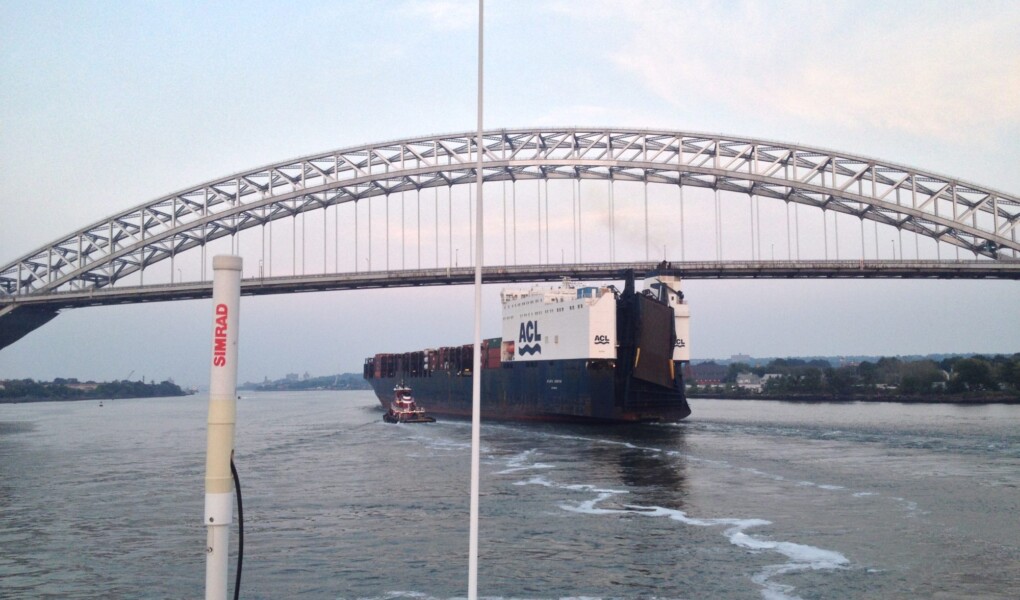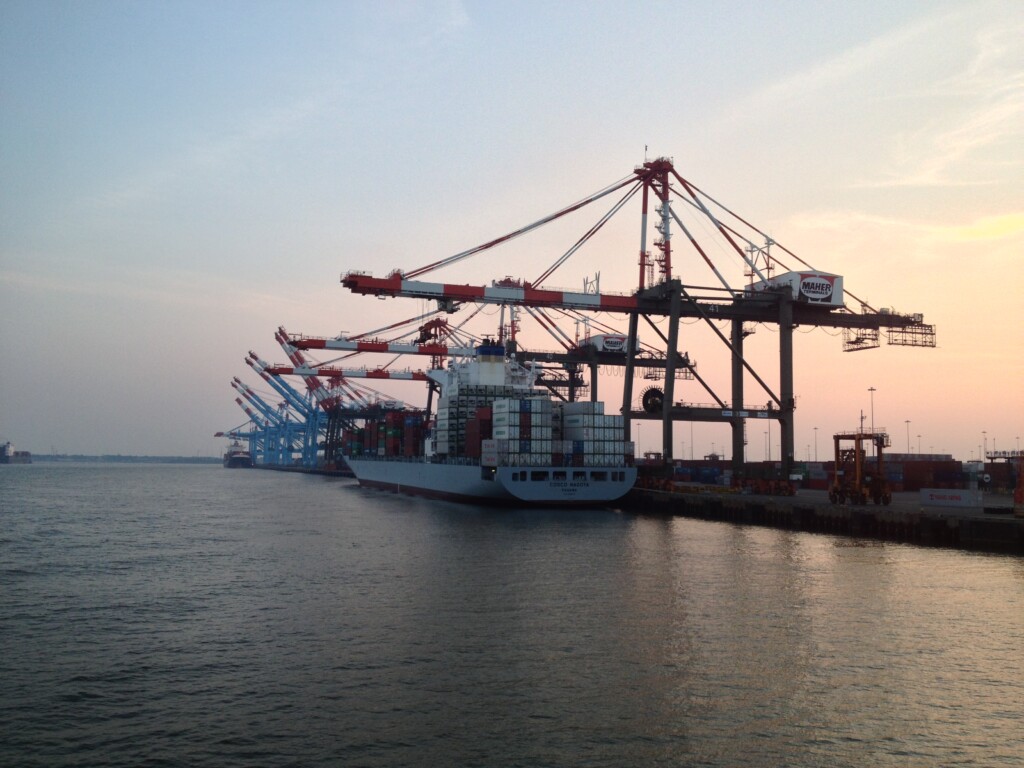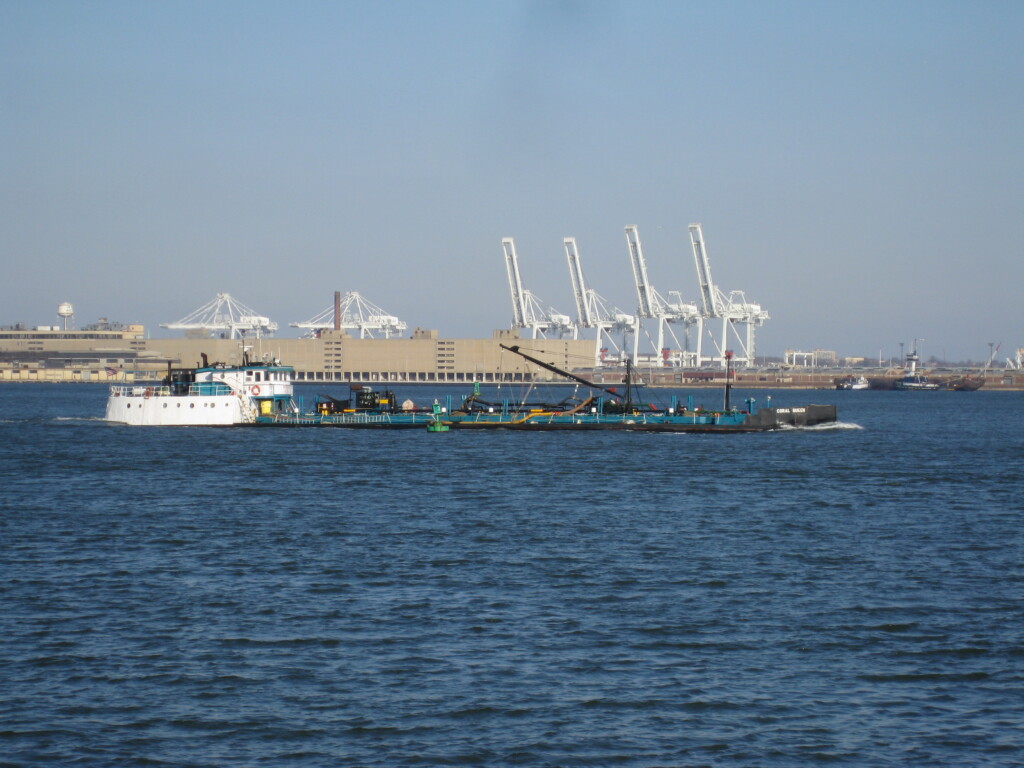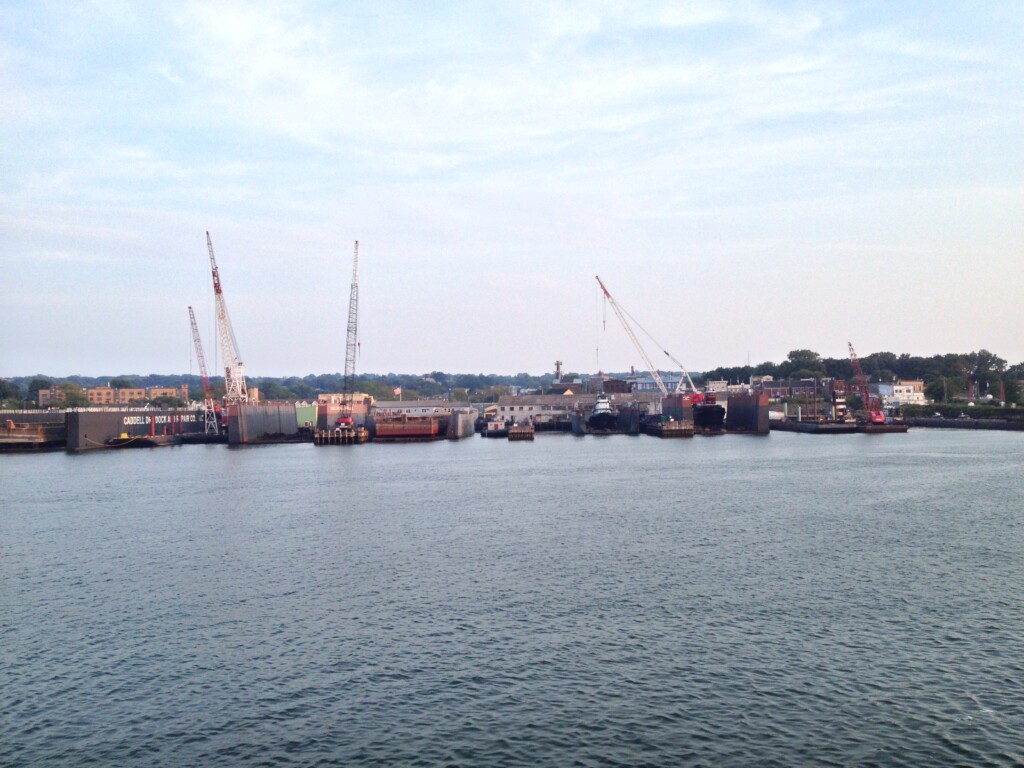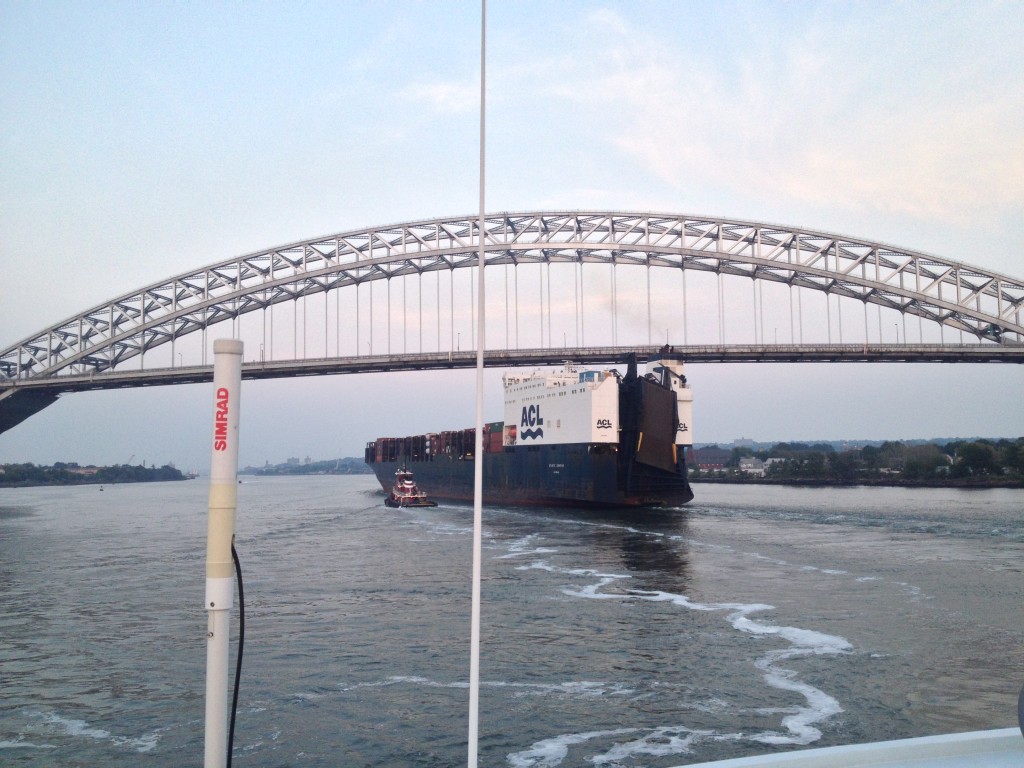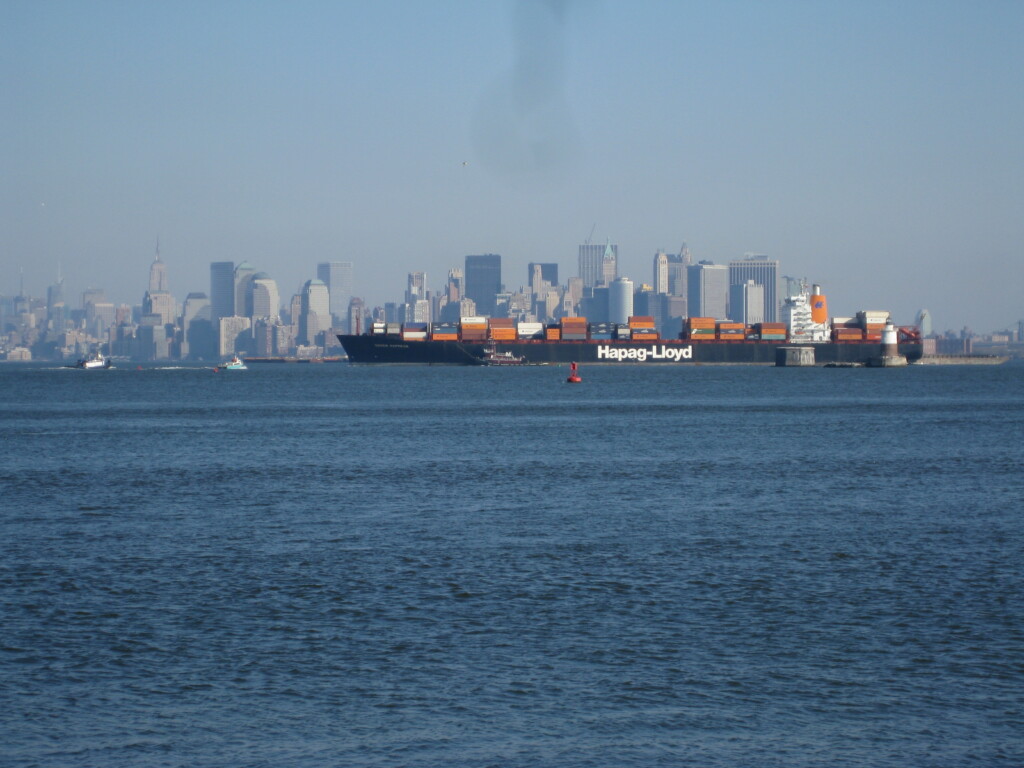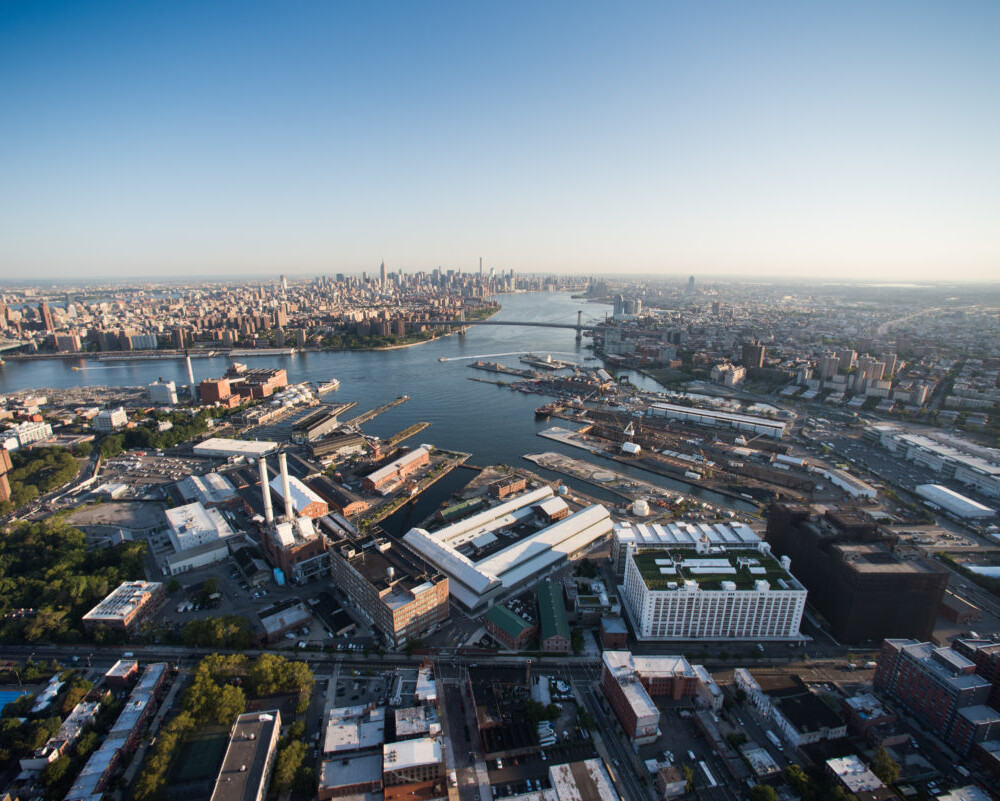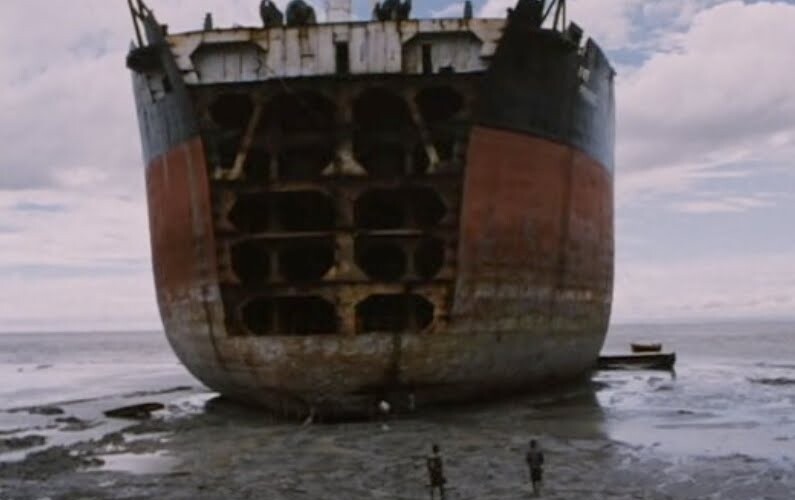By now all of us who celebrate Christmas have given and received our gifts. While we all put a great deal of thought (hopefully) into finding the perfect present for our loved ones, we probably put considerably less into considering how that item arrived under the tree on Christmas morning (Santa-borne gifts excluded, of course). The last leg of the journey, whether sorted by Amazon, or shipped by UPS or the Postal Service, is certainly a logistical marvel unto itself, but we’re more interested in the first leg – and if any of those gifts or any of their components were made overseas (and even some that were made domestically), there is a 95% chance that they made the better part of their journey to your home by ship.
For those of us who live in the northeast, most of those ships deliver their goods by way of the Port of New York and New Jersey, a unified complex that spans both sides of the Hudson River, including ship, rail, air, and truck cargo handling facilities around the New York metro area, and covering Upper and Lower New York Bay, Newark Bay, and the region’s airports. Earlier this year, thanks to a generous gift from our friend and guide Alex Tronolone, we were able to tour the harbor with the Working Harbor Committee, an organization of maritime professionals and enthusiasts that organize programs to educate the public about the working waterfront. Their Hidden Harbor Tour of New York and Newark Bays explored in detail the vessels, waterways, and facilities of the port, led by Ed Kelly, professional mariner and executive director of the Maritime Association of the Port of New York and New Jersey. Capt. Kelly, alongside Working Harbor Committee executive director Capt. John Doswell, took us from the South Street Seaport along the Brooklyn waterfront to Red Hook’s Erie Basin, then across the harbor to the north shore of Staten Island and up into Newark Bay.
The remarkable thing about New York’s waterfront is that it remains a vital economic engine for the city, region, and even the country – today it trails only Los Angeles and Long Beach in trade volume among US ports – its workings are largely invisible to most people. “We’ve gotten so good at what we do,” Capt. Kelly noted, “that you don’t even see us doing it.”
So let’s illuminate the process just a bit. Cargo is divided into three categories: general cargo, also called break bulk, is packaged items that must be loaded individually, like barrels or pallets; bulk cargo refers to loose, unpackaged materials, like coal, crude oil, or grain; and finally there is containerized cargo, which makes up the bulk of the port’s traffic. In 2012, 5.5 million TEUs, or twenty-foot equivalent units, the standard measure for container shipping (though most are 40 feet long, meaning they are 2 TEUs) moved through the port. These containers are handled at four facilities; two of these are in New York City proper: the Red Hook Container Terminal in Brooklyn, and the New York Container Terminal in Staten Island. Across the river in Bayonne, NJ is the Global Marine Terminal, and the largest container-handling facilities are found in Port Elizabeth/Newark, which contains three separate operations – APM, operated by Maersk, the world’s largest shipping company; Maher Terminal; and Ports America’s PNCT.
Not surprisingly, New York’s largest foreign trade partner is China, accounting for 26.9% of import volume and 31.6% of exports in 2012. While these figures appear to show a relatively balanced trade, the reality is quite different. We import by sea mostly finished goods – furniture, beverages (which is made up mostly of European-made alcoholic drinks), and machinery led the way in New York – while we export raw and scrap materials. Scrap paper and scrap metal are the port’s largest exports to China, totaling $1.2 billion worth in 2012. And that’s just when we can actually find things to export – of the 2.7 million containers that were shipped out of New York, more than 40% of them left the port empty, destined to be refilled in Asian ports of simply scrapped.
Containerization has had the most profound effect on maritime commerce since the invention of the steam engine. Much of New York’s waterfront used to be dedicated to piers and warehouses used for loading and unloading vessels, which was done almost entirely with manpower. Hundreds of thousands of stevedores and longshoremen worked on the docks using brute strength to keep the engine of commerce running. With the introduction of containers in the late 1950’s, far fewer workers were necessary to move cargo – a single longshoreman operating a container crane can move up to 40 units an hour – and different facilities were required.
Instead of a dense network of finger piers and huge warehouses, containers require lots of open space where they can be stacked, stored, and transferred to rail or semi-trucks. This made New York City’s historic waterfront obsolete, leading to the shuttering of iconic facilities like the Brooklyn Army Terminal, the abandonment of countless city piers, and the movement of the industry to neighboring New Jersey. But that does not mean the port is not important to the city’s economy. Though today there are only around 3,000 longshoremen working the port (a twelve-fold decline in the last 50 years), port operations directly and indirectly support more than 270,000 jobs in the region.
Of course, the port is never done changing, and for the past decade, a massive transformation had been underway, though its been largely unnoticed by most New Yorkers. For nearly a century, the dimensions of many ships and port facilities around the world have been governed by a single geographic feature: the Panama Canal. Because so much world commerce passes through the canal, it did not make economic sense to build ships that were too large to fit through it, and as a result, the facilities used to handle those ships were built to the parameters of the canal as well. New York Harbor is no exception. The berths and container cranes along our waterfront are large enough to handle so-called “Panamax” ships, which top out at 965 feet in length and 106 feet wide, and our harbor has long been dredged to a depth of 39.5 feet.
While this standard has stood since the canal’s opening in 1914, in 2015 the canal will complete a major expansion, and “New Panamax” standards will come into effect. As a result, shipbuilders and ports have been expanding to keep up. While a Panamax ship can typically carry 5,000 TEUs, New Panamax ships will carry 12,000 TEUs, reaching 1,400 feet long and drawing 50 feet of water. That means the 38 miles of shipping channels in New York Harbor had be made deeper by 10.5 feet. The Army Corps of Engineers has been working on this project for more than a decade, and the bill has already reached more than $2.5 billion.
One of the most important channels is the Kill Van Kull along the northern shore of Staten Island, which is the main approach into Newark Bay. Deepening this section was begun earlier this year, and it will require extensive underwater detonation to remove bedrock. But the larger obstacle is actually above the water. The Bayonne Bridge has long been one of the harbor’s major choke points due to its low span, just 151 feet above the water. Ships must pass under the bridge at dead center, otherwise they risk hitting it, which is a frequent occurrence; meanwhile, a large proportion of the world’s container fleet has no hope of fitting under it. To solve this problem, the Bayonne Bridge is currently undergoing a $1.2 billion renovation that will raise the roadway of the steel arch bridge 65 feet, providing ample clearance for much of the world’s container fleet. The raising will be done one traffic direction at a time, meaning the bridge will not have to be closed during the project, slated to be completed in 2016.
Even with this expansion, however, New York will remain behind the curve being set by a new breed of container ships. Vessels like the Maersk McKinney-Møller, currently the world’s largest container ship, won’t be visiting New York – or any North American port – any time soon. It could squeak by our deepened channels (it draws 48 feet), but it would have difficulty making some of the turns in the harbor, and none of our container cranes could reach over it to unload its 18,000 TEUs. For the time being at least, it will ply routes between European and Asian ports built to handle it.
Though the container ports and other facilities remain behind security gates (terrorism is a constant concern in the maritime industry), there are plenty of opportunities to see the port in action and better understand its impacts on our daily lives. The Working Harbor Committee offers tours and events throughout the year, and a little bit of knowledge about the harbor and its vessels will make any trip out on the water that much more interesting and rewarding. The Brooklyn Navy Yard contains important ship repair and docking facilities for commercial shipping, which you can see up-close on our tours. And if you’re interested in shipspotting, MarineTraffic.com is an amazing resource for tracking ships around the world through the Automatic Identification System (AIS); they even have an awesome app.

